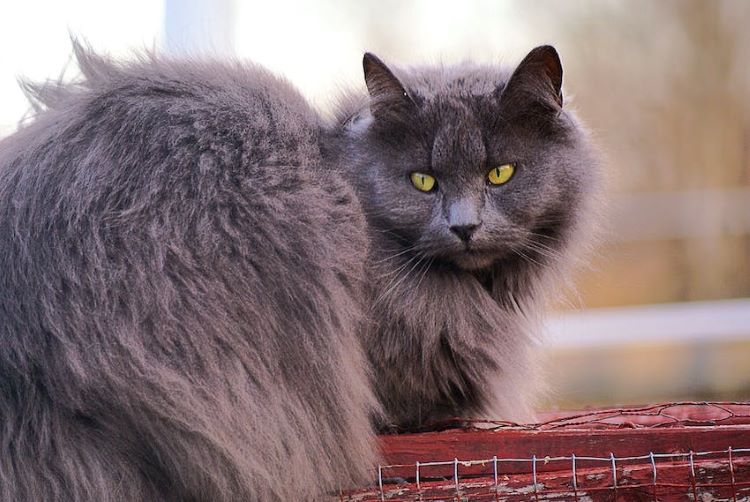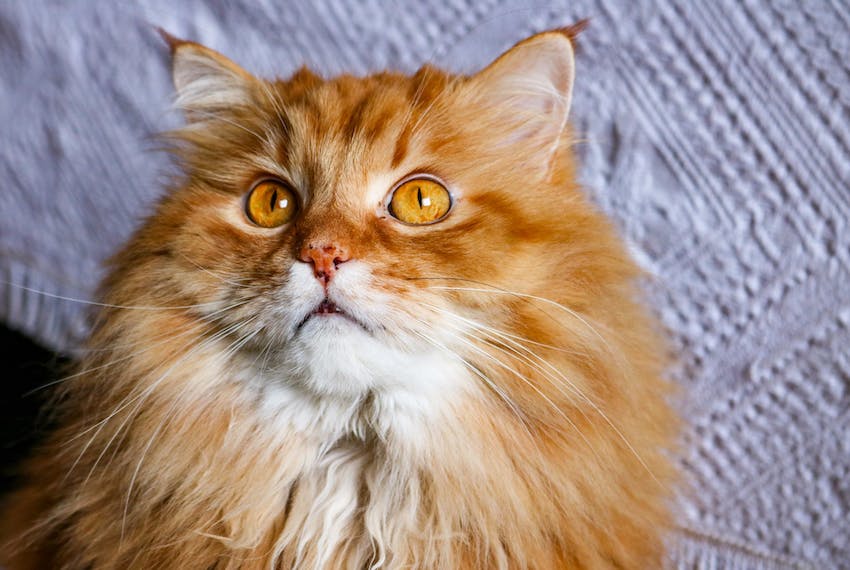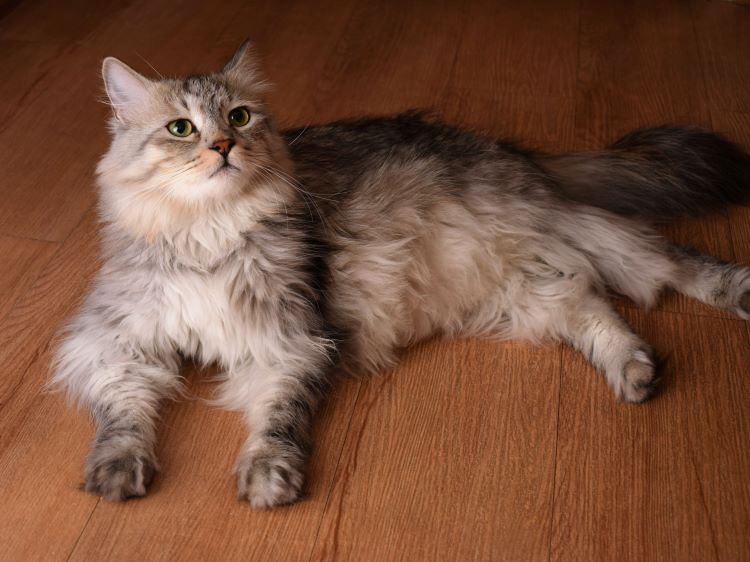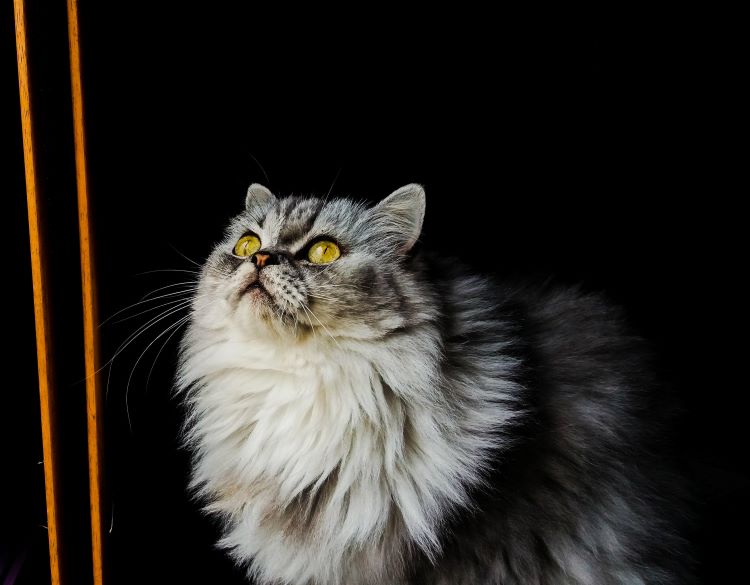Ready to help treat your pet to a healthy life?
All About the Domestic Longhair Cat
By : Trupanion Staff | Updated Feb 7, 2024

The Domestic Longhair cat, with its luxurious coat and often captivating charm, stands as a quintessential icon of feline beauty and companionship. As one of the most prevalent types of cats worldwide, the Domestic Longhair embodies a rich tapestry of traits that have endeared it to cat lovers for generations.
With origins tracing back to various mixed-breed cats, the Domestic Longhair showcases a captivating diversity of colors, patterns, and personalities. Beyond its stunning appearance, the Longhair boasts a gentle and affectionate nature, often fostering deep bonds with human companions. Whether curled up on a sunlit windowsill or engaging in playful antics, these delightful fit in well in households around the world, earning their place as cherished members of the family.
Curious as a cat about Domestic Longhairs? This guide is here to help!
What is a Domestic Longhair cat?
Although the Domestic Longhair is often referred to as a type of cat breed, the truth is that it's not specific breed, but a term used to describe a group of cats with long fur. These cats don't belong to any particular cat breed (unlike, say, the Persian cat, which is an established long-haired cat breed). Kittens and cats of unknown lineage are commonly referred to as Domestic cats or Mixed Breed, further refined into categories based on length of fur: Domestic Short Hairs, Domestic Medium Hairs, and Domestic Long Hairs.
As a result, Domestic Longhair cats come in a wide variety of colors and coat patterns, not to mention different temperaments thanks to their diverse genetics. That said, they are often said to be highly friendly and affectionate toward humans. They are also common in many parts of the world, making them popular pets for individuals and families alike.
Fun facts about Domestic Longhair Cats
- Domestic Long Hair cats have quite the lifespan! The average long-haired kitty can be expected to reach between 15 and 17 years.
- Domestic Long Hairs have unknown mixed breed origins. As such, they can be found in any color, color combination, or pattern that is seen in other cat breeds.
- Thanks to their large genetic pool, Domestic Longhairs can reach anywhere between 10 and 22 pounds when fully grown, with some outliers.
- Just because a Domestic cat doesn’t have an official pedigree doesn’t mean you can’t show them! The International Cat Association (TICA) allows cat owners to show their non-pedigreed cat, with judging based on condition, beauty, and “show presence.” The World Cat Federation and the International Feline Federation allow housecats to compete in shows as well.
- The long fur in the Domestic Longhair cat is likely due to a recessive mutated gene, thought to have surfaced when cats needed warmer coats in the colder European climates, around the 15th century.

Get to know the Domestic Longhair cat
The Domestic Longhair cat, or "DLH" as some say, is a type of domestic cat distinguished by its long, flowing coat and varied genetic background. Unlike specific purebred breeds, Domestic Longhairs do not adhere to strict standards of appearance or lineage. Instead, they encompass a wide spectrum of physical traits, colors, patterns, and personalities, reflecting their mixed ancestry. As mentioned earlier, these impressive cats can have fur ranging from semi-long to extremely fluffy, which requires regular grooming to prevent matting and tangling. In addition to having incredibly diverse coat colors and patterns, Domestic Longhairs can also exhibit a variety of eye colors, adding to their unique appearance.
Fascinatingly, Domestic Longhair coat coloring and look trend toward the most common coloring and body style of other pedigreed cats in their geographical area. For example, Domestic cats in Asia quite often have Siamese coloring. In contrast, Domestics in the United States and the United Kingdom have a larger, sturdier body like the popular Shorthairs.
Due to their mixed heritage, Domestic Longhairs tend to be relatively healthy and resilient cats, although they may still be susceptible to common feline health issues. With proper care, nutrition, and regular veterinary check-ups, they can live long and fulfilling lives with a loving human family.
Personality and temperament
Wondering if you'd mesh well with a Domestic Longhair for a fur-friend? In terms of temperament, Domestic Longhair cats are known for their adaptability and versatility. They often display characteristics commonly associated with other friendly cat breeds, such as independence, curiosity, and intelligence. However, their individual personalities can vary widely, ranging from outgoing and sociable to reserved and introspective. These cats are true individuals, with their personalities depending on their genetics and learning experiences. You’ll find all “types” of these mixed breeds, which means there’s a kitty for everyone!
They’re often the first cat for many owners, due to their prevalence in shelters and rescues. When choosing a Domestic kitten or adult cat, make sure to look for a companion that fits in with your lifestyle.
Domestic Long Hair cats have varied lifestyle preferences. Some are content to lounge around with their human guardians with occasional short play sessions, some are independent and self-entertaining, and others are highly active, intelligent, and require constant physical and mental stimulation.
If you have a particular lifestyle you’d like to share with your furry friend, consider adopting an adult cat. Since they’ve already grown into their personalities, you can get a better sense of the lifestyle they’ll need. Kittens (as a general guideline) tend to be active and playful but may mellow out or maintain their energy level as they get older. You never know what you’re going to end up with when you bring home a kitten! That’s part of the fun.
History of the Domestic Longhair cat
The Domestic Long Hair cat can be found all over the world. Throughout history, they’ve acted as workers and companions to their families. Arriving in America aboard the ships of the early settlers, including the Mayflower, these cats played an essential role in the new world. They may have started out keeping rodents at bay for pioneers and shopkeepers but soon became a popular family pet.
According to the American Veterinary Medical Association’s report in 2022, over 29% of American households include a cat. The Domestic Long Hair cat will no doubt continue to thrive as an important part of cat culture.

Care and training
In order to provide your Domestic Longhair with the best life possible, it's important to understand their needs. While training is typically more associated with dogs, cats still need mental enrichment and exercise.
Domestic Longhair exercise needs
The Domestic Longhair cat needs enough exercise to stay healthy and trim, as well as preventing unwanted behavior problems. Provide them with sufficient playtime, areas to climb, and encourage them to follow you around the house (or leash train them for outside walks) to get their steps in every day.
Mental enrichment
All cats require mental enrichment to keep their minds sharp and active. Boredom can cause stress, which results in behavior issues. To keep your kitten or adult cat from getting bored, make sure you provide them with plenty of toys, rotated regularly, to keep them novel and exciting; plenty of perching places to climb and explore; cozy nooks in which to take naps; windows from which to watch wildlife; play (using an interactive wand toy) providing an outlet for their instinctive predatory behaviors; and puzzle-solving opportunities (such as food puzzles). Depending on how inquisitive, motivated, and intelligent your cat is, you might also consider clicker-training tricks and commands.
Behavior
While many Domestic Longhair cats don’t exhibit behavior issues, they can crop up if cat guardians aren’t meeting the needs of their cat. Most common are house-soiling (especially if appropriate litter box setups are not provided and maintained); inter-cat aggression (if a slow-introduction process is not followed); and destructive behavior such as scratching furniture, knocking over objects, and counter-surfing (particularly if ways to alleviate boredom are not provided).
The potential for encountering these problems can be minimized or avoided by making sure your cats’ needs are being met. This means an appropriately clean place for elimination, territorial security, mental and physical exercise, and social interaction.
Cats are also known to exhibit behavioral issues or changes if they’re experiencing pain, discomfort, or medical problems. So, it’s important to manage your kitty’s health with regular visits to the veterinarian.
Does the Domestic Long Hair cat play well with others?
Depending on your cat’s personality, they may get along well (or not) with other kittens, adult cats, household pets, and people. It’s always best to introduce your cat to a potential new friend slowly, giving them a choice whether to interact, and providing positive reinforcement for positive interactions.
Take particular care when introducing cats to each other, as most cats require time to get to know a new feline companion. Rushing introductions can result in fighting or injuries, undesirable behaviors (such as house-soiling), and stress for both humans and animals.
Activities for Domestic Longhair cats
Domestic Longhairs have a wide variety of preferences when it comes to fun activities. If your cat shows signs of fear, stress, or anxiety, discontinue the activity; start small, and encourage the exploration of new objects and activities using positive reinforcement (treats, petting, praise, play, etc. — anything your cat enjoys). Have fun together while you try new things!
- Food puzzles. Start easy, and with a high-value treat. When your kitten gets the hang of things, increase the difficulty level, and perhaps mix other food in with the treats. Many cats are even fed their meals using food puzzles and puzzle feeders!
- Wand toy play sessions help keep your cat physically and mentally healthy. Use a long wand with interchangeable lures that resemble natural prey items - birds, rodents, snakes/lizards, and bugs. Some cats have preferences for certain types of prey, so don’t be afraid to switch lures to keep things exciting.
- Self-play toys such as small mice or balls that can be batted around. Even crumpled up pieces of paper and aluminum foil balls can be fun! But make sure you keep a close eye on playtime, so toys don’t turn into snacks. Some cats (especially young kittens) will chew and can ingest things they shouldn’t. And don’t forget to rotate toys regularly to ensure that your cats don’t get bored.
- Vertical space: provide plenty of places for your cats to explore - cat trees, perches, and shelves. Keep kitty safe by securing these landing and launching pads to avoid falling and crushing injuries.
- Clicker-training can be a fun activity for smart cats. Try trick-training (commands like sit, roll-over, stationing, high-fives, etc.) or even building agility courses for cats to run through.
- Cat TV! Play videos of wildlife made specifically for cats that feature birds, squirrels, and other animals. Better yet, place bird and squirrel feeders outside of a window from which your cat can enjoy a live show.
- Heated cat beds will be appreciated in colder months, particularly for older cats (or any aged cat that has arthritis).
- Exploring time! Let your cats explore the packing paper that comes in delivered boxes. Just throw a length of the crumply paper on the ground and cats will pounce, dive, and hide in it. You can also add catnip to get the party started!
Veterinarian tip
Never leave your cat alone near an open window that doesn't have a secure screen. If it's on the first floor, your cat can get out of the house and get injured, lost or any of the other possible problems that outdoor cats face on a daily basis. If the window is on the second floor or above your cat is at risk of suffering from severe injuries of "high-rise syndrome," and you don't even need to live in a true high-rise building. The injuries of "high-rise syndrome" tend to be worst in falls from between the 2nd and 7th floors!
Grooming and care
The Domestic Longhair cat has a thick, double coat of fur that is generally two inches long or more.
All Domestic cats need regular maintenance to keep their coats healthy. Longhairs especially need weekly brushing (more during seasonal shedding periods). This helps prevent matting and furballs that can creep up quickly in a long coat. While most are quite capable of keeping themselves clean, sometimes a bath is in order. Like all cats, the Domestic Longhair requires regular nail trimming and teeth brushing to stay happy and healthy.

Domestic Long hairs in pop culture
Domestic Longhair cats have made their mark in various aspects of pop culture, often celebrated for their beauty, charm, and sometimes mysterious allure.
Famous owners of the Domestic Long Hair
- Robin Lopez (Basketball Player)
- Russ Smith (Basketball Player)
- Evan Smith (Football Player)
Famous Domestic Longhair cats
- The Oreo Cat
- Molly who teaches animals and humans it’s ok to look different
